Dunfermline
| Dunfermline | |
| Scottish Gaelic: Dùn Phàrlain | |
| Scots: Dunfermline | |
| Auld Grey Toun [1] | |
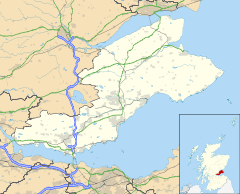 Dunfermline
|
|
| Area | 7.07 sq mi (18.3 km2) |
|---|---|
| Population | 45,462 (town) [2] 100,342 (urban) [2] |
| - Density | 6,430 /sq mi (2,480 /km2) |
| OS grid reference | |
| Council area | Fife |
| Lieutenancy area | Fife |
| Country | Scotland |
| Sovereign state | United Kingdom |
| Post town | DUNFERMLINE |
| Postcode district | KY11, KY12 |
| Dialling code | 01383 |
| Police | Fife |
| Fire | Fife |
| Ambulance | Scottish |
| EU Parliament | Scotland |
| UK Parliament | Dunfermline and West Fife |
| Scottish Parliament | Dunfermline West |
| Mid Scotland and Fife | |
| List of places: UK • Scotland • | |
Dunfermline (Scottish Gaelic: Dùn Phàrlain) is a large town in Fife, Scotland, located on high ground 3 miles from the northern shore of the Firth of Forth. It was a former capital of Scotland, having been historically a seat of the kingdom's Royal Court and an important ecclesiastical centre. Its former abbey is the burial place for many in the country's line of monarchs including Robert I and Saint Margaret.[3]
Dunfermline lies on the northern spur of the Fife Circle rail line and the intersection of the M90 and A92, giving it strong links to the Central Scotland Transport Network. Traditional industries have included textiles, engineering, defence and electronics. In recent years the economy has diversified once more into the service sectors, including tourism.[4] With a population of 45,462 it is the second-largest settlement in Fife. The wider Dunfermline and West-Fife Local Plan area, of which it is a part, has a total population of just over 100,000.
The ruins of Dunfermline's original abbey infrastructure are an important tourist attraction for the town. They include the remains of the Royal Palace of Dunfermline, birthplace of Charles I. The poet Robert Henryson, one of Scotland's major literary figures, was also associated with the abbey.
Since the early twentieth century, the most famous "son" of Dunfermline has been the wealthy industrialist, businessman, and philanthropist Andrew Carnegie. He was the central figure in promoting its early 20th century urban renewal and his financial legacy is still of major importance.
Contents |
History
The first historical record for settlement in Dunfermline was around 506 AD as a centre for the Culdee faith. The first recorded name "Dunfermelitane" followed in 1128 by David II and the form officially adopted as "Dunfermline" in 1609.[5]
Malcolm III established Dunfermline as a new seat for royal power in the mid-11th century and initiated changes that eventually made the township the de facto capital of Scotland for much of the period until the assassination of James I in 1437.[6] Malcolm's second Queen, the Saxo-Hungarian princess Margaret, was instrumental in this transformation, persuading her husband to establish a Benedictine priory in the new royal centre.[6][7][8][9] This foundation, which in 1128 became Dunfermline Abbey, eventually replaced the long established Culdee church there and played a major role in the general romanisation of religion throughout the kingdom. At the peak of its power, the abbey controlled four burghs, three courts of regality and a large portfolio of lands from Moray in the north down into Berwickshire.[6] The royal palace was also connected to the abbey and the first known documentation of the Auld Alliance was signed there on 23 October 1295.
Dunfermline was first credited as a "menus burgh" by David II with evidence suggesting that burgh of barony status was bestowed between 1124 and 1147.[10] Royal burgh status was then granted by James VI in 1588.[7][11] Unfortunely, the Union of the Crowns soon ended the town's royal connections when James VI relocated the Scottish Court to London in 1603.[7][8] The Reformation of 1560 had previously meant a loss of the Dunfermline's ecclesiastical importance. In 1624 a major fire left a large part of the medieval-renaissance burgh in ruin. Some of the surviving buildings of the fire were the palace, the abbey and the Abbot's House.[6][7][12]
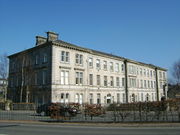
Although the town "impressed" Daniel Defoe as showing the "full perfection of decay", it was in fact beginning to recover a little of its former prosperity in the 18th century. James Blake's introduction of the weaving of fine damask linen in 1718 led to the town becoming the world's leading producer.[7][8][11][13] The most imposing of the linen damask factories was St Leonard's Mill which was established by Erskine Beveridge in 1851. A warehouse and office block was later added around 1869. Other linen factories were built on land to both the north and south ends of the burgh.[14] During the mid-19th century, powerloom weaving started to replace linen damask. The latter did not survive, going into decline straight after the end of First World War.[7] The establishment of Scotland's only Royal Navy Dockland in neighbouring Rosyth in 1909, boosted by two world wars, led to further growth in the town becoming the area's only major employer.[7][8]
Post-war housing began in the late 1940s with the construction of temporary prefabs and Swedish timber houses around areas such as Kingseat and Townhill. Additional provisions were made for electricity, water and sewage systems. Council housing was focused towards Abbeyview, on a 240-acre (97 ha) site on Aberdour Road; Touch, to the south of Garvock Hill; Bellyeoman and Baldridgeburn. Private housing became focused to the north of Garvock Hill and on the site of West Pitcorthie Farm.[15]
Today Dunfermline has effectively become a dormitory town for Edinburgh.[7] Major employers in the town include the Bank of Scotland, Dunfermline Building Society, CR Smith and British Sky Broadcasting.
Governance
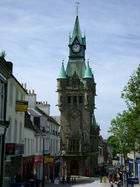
Dunfermline had its own town council until this was abolished in 1975 under the acts Local Government (Scotland) Act 1973 and the County Planning (Scotland) Act 1972 by a three-tier authority. Between 1975 and 1996, Dunfermline District Council (DDC) operated under Fife Regional Council served both the town and West Fife from Kincardine to Aberdour.[16] Today, the town is represented by the local authority Fife Council based in Glenrothes who are the executive, deliberative and legislative body responsible for local governance.[17] Dunfermline has retained some importance as an administrative centre with the Council's principle west Fife office based at New City House. Councillor meetings, including the City of Dunfermline Area Committee, take place in the Dunfermline City Chambers. Governmental facilities including Dunfermline police station, sheriff court and fire station are also located close to the town centre at various points on Carnegie Drive.
Dunfermline is within the Dunfermline West (Scottish Parliament constituency), the Mid Scotland and Fife (Scottish Parliament electoral region) of the Scottish Parliament (at Holyrood) and the Dunfermline and West Fife (UK Parliament constituency) (at Westminster).[18] The Dunfermline and West Fife UK (or Westminster) constituency, created in 2005 when the previous seats Dunfermline East and Dunfermline West were abolished, elects a Member of Parliament (MP) to the House of Commons of the Parliament of the United Kingdom by the first past the post system. The seat was won at the 2010 general election by Thomas Docherty of the Labour Party.[19] Previously, the seat had been held by Willie Rennie for the Liberal Democrats since the Dunfermline and West Fife by-election in 2006. The Dunfermline West Scottish Parliament (or Holyrood) constituency created in 1999 is one of nine within the Mid Scotland and Fife electoral region. Each constituency elects one Member of the Scottish Parliament (MSP) by the first past the post system of election, and the region elects seven additional members to produce a form of proportional representation. The seat is currently held by Jim Tolson for the Liberal Democrats.[18]
Demographics
| Dunfermline | Fife | Scotland | |
|---|---|---|---|
| Total population | 39,229 | 349,429 | 5,062,011 |
| Foreign born | 1.71% | 1.18% | 1.10% |
| Over 75 years old | 6.96% | 7.46% | 7.09% |
| Unemployed | 4.21% | 3.97% | 4.0%[2] |
According to the 2001 census, Dunfermline had a total population of 39,229.[20] The population of Dunfermline is estimated to have increased to around 45,432 in 2006.[2] The demographic make-up of the population is much in line with the rest of Scotland. The age group from 30 to 44 forms the largest portion of the population (23%).[20] The median age of males and females living in Dunfermline was 36 and 39 years respectively, compared to 37 and 39 years for those in the whole of Scotland.[20]
The place of birth of the town's residents was 96.99% United Kingdom (including 87.02% from Scotland), 0.25% Republic of Ireland, 1.06% from other European Union countries, and 1.71% from elsewhere in the world.[20] The economic activity of residents aged 16–74 was 46.65% in full-time employment, 12.54% in part-time employment, 4.51% self-employed, 4.21% unemployed, 2.75% students with jobs, 2.11% students without jobs, 13.57% retired, 4.92% looking after home or family, 5.97% permanently sick or disabled, and 2.78% economically inactive for other reasons.[22]
Economy
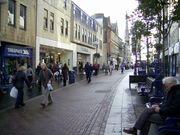
Traditionally, industry in Dunfermline was concentrated to the north of the town centre with textiles being particularly important to the town's economy. Following the two world wars, Dunfermline's traditional industries declined. However a number of new engineering, defence and electronics companies developed in the town in industrial estates located in the south at Pitreavie, and to the west at Elgin Street. After the end of the Second World War traditional industries, particularly linen and coal mining became obsolete in the town and many factories ceased production. Manufacturing in the town rejuvenated by the early 1960s when Monotype Corporation opened a new factory in Halbeath.[24] A new business park named the Carnegie Campus opened in the mid-1970s, following the arrival of Philips and the re-location of the offices of the Dunfermline Press. Smaller industrial estates were focused on Dickson Street, Halbeath Drive and Primrose Lane.[24]
Today, Dunfermline's economy is largely reliant on financial and service sector jobs which account for 87% of the town's employment. There are also moderate instances of light industry, local government, construction, retail and other commercial sector employment within the town. Unemployment levels are below the Scottish average at 3.4% and Dunfermline is Fife's second largest employment centre providing approximately 30,000 jobs.[25] Employment in Dunfermline is largely concentrated in the town centre and in peripheral industrial estates and business parks.
A number of new engineering, defence and electronics companies developed in the town in industrial estates located in the south at Pitreavie, and to the west at Elgin Street. In more recent times the economy has begun to diversify into the service sectors, including tourism.[25] Major employment is also generated from the numerous offices located at the Carnegie Campus in the south of the town including BSKYB, HBOS and the Dunfermline Building Society. Major employment opportunities are also being promoted to the east as part of the town's eastern expansion area.[25] Fife Council operate their West Fife services from New City House, a building located to the south of the town centre.
Dunfermline Town Centre is one of the most popular shopping destinations in Fife dominating the west Fife area and has the second largest retail provision in the region.[26] The focus of the town centre is along a pedestrianised High Street which is dominated by the Kingsgate Shopping Centre. The shopping centre was extended and revamped in 2006 as part of a masterplan to regenerate the town centre which included a new department store; several new units and replacement car park.[27] To the north of the centre, adjacent to the Kingsgate shopping centre is the Carnegie Drive Retail Park where a number of warehouse store retailers are located. Major shopping facilities are also provided at the Halbeath Retail Park to the east of the town. An out of town leisure park has been constructed on the eastern edge of Dunfermline providing a range of leisure facilities and restaurants.
Landmarks and notable buildings
To the south of the High Street, on the Kirkgate, lies the historic Dunfermline Abbey which is considered to be one of the best examples of Scoto-Norman monastic architecture.[28][29] Only the incomplete and much altered nave from the medieval church survives.[28] The eastern section of the abbey has since been re-built as a parish church between 1818 and 1821.[29] Despite much of the monastic buildings being destroyed by the troops of Edward I in 1303, there are substantial remains with the lower stories of the dormitory and latrine blocks on the east side of the cloister being the earliest surviving parts, dating back to the early 13th century.[29][30]
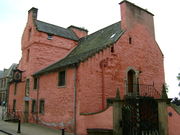
To the north of the abbey, situated on the corner of the May Gate and Abbot Street is one of the oldest houses in Dunfermline—the abbots' house.[31] This is said to partially date from around 1450.[32] Owned and operated by Dunfermline Carnegie Trust, the building is now an award-winning heritage centre which was opened in 1995.[31][32][33] Along Abbot Street, the first of many Carnegie libraries in Scotland, known as Dunfermline Carnegie Library was built between 1881 and 1883.[34] On the east side of Moodie Street is Andrew Carnegie's birthplace, close to the junction with Priory Lane and St Margaret's Street.[35] This is located at number two Moodie Street.[33] The street was named after James Moodie, the provost of Dunfermline from 1792 to 1807.[35] The house was one of the many cottages built for the employees of hand loom weavers.[35][36] The B-listed cottage which dates from the late 18th century is now one of the only examples left of these sort in the surrounding area.[35][36] A memorial hall was added in 1928 to adjoin the cottage.[35] Today, this operates as a birthplace museum for the town's most famous son.[35][36]
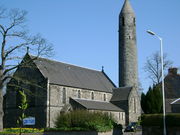
On Bothwell Street is the Bothwell Street viaduct, built between 1874 and 1877, as a sandstone bridge by R Young and Son to carry the Edinburgh to Dunfermline Railway over the Bothwell Gardens Roundabout.[37][38] The bridge was restored in 1994.[38] To the south of the viaduct, is St Leonard's Church and round tower, on Brucefield Avenue, built between 1903 and 1904.[39][40] The round tower with a conical roof is considered to be a landmark.[39][40] On the east side of Bothwell Street is the former warehouse of the St Leonard's Works which date from around 1869.[41][42] The warehouse is the only surviving part of the St Leonard's Works, which was the first power-loom factory to be built in Dunfermline in 1851 and became the largest linen damask factory in Europe by the 1880s.[41]
To the west of Dunfermline, close to the village of Crossford is the Pitfirrane Castle, once the seat of the Halkett family.[43][44] The majority of the castle dates from the 16th century including the plain rectangular tower.[45] The castle and estate were purchased by the Dunfermline Carnegie Trust in 1951 and have become the clubhouse for Dunfermline golf course.[44] To the south of Dunfermline is the L-plan Hill House built in 1623 for William Monteith of Randford as a lairds' house.[46][47] Pitreavie Castle is also located close to the southern end of the dual carriageway between the town and Rosyth.[44] This was built in 1631 as a fortified manor by Sir Hendry Wardlaw.[44] The castle has since been converted into luxury flats.[48] To the south-west of Dunfermline is the three-storey Logie House, built for the Hunt family.[49]
Culture
The town's most famous son is Andrew Carnegie. A museum dedicated to the birthplace of Andrew Carnegie containing artefacts is located on the southern gateway of the town centre. The museum also runs annual heritage walks every summer.[50] Many of his donations to the town such as the Carnegie Leisure Centre, Dunfermline Carnegie Library and particularly, Pittencrieff Park were all intended to "bring into the monotonous lives of the toiling masses of Dunfermline more sweetness and light".[8][33] Four charities in his name still have their headquarters here—the Dunfermline Carnegie Trust; the Carnegie Hero Fund; the Carnegie Trust for the Universities of Scotland and the Carnegie United Kingdom Trust which are all based in Andrew Carnegie House within the grounds of Pittencrieff Park.[50] Dunfermline has also been bequeathed two theatres, Carnegie Hall on East Port and the Alhambra on Canmore Street. Carnegie Hall which was built between 1933 and 1937, is a 540-seat theatre complete with a restaurant and adjacent music institute.[51] The Alhambra which was opened in 1922, claims to have one of the largest stages and seat capacities in Scotland.[52]

Local groups include the Dunfermline Folk Club, Dunfermline Abbey Choir and Dunfermline district pipe band. Live Music Venues, also have had a strong prominence in Dunfermline with the likes of Montys and PJ Molloys. Many night clubs are also present such as Harlem, Johnson's, Life and Lourenzo's (Formerly Urban) and are mainly concentrated around the town centre.[53] Velocity/Kinema Live serves as both a nightclub and music venue (previously known as The Kinema Ballroom, Night Magic, Hollywood Boulevard & The Ballroom). In terms of popular music, Dunfermline is home to bands such as The Skids, Big Country and Nazareth.[54]
Dunfermline is home to professional teams in football, rugby and cricket.[55] The senior football team, Dunfermline Athletic play their games at East End Park in the Scottish Football League First Division. The team have became famous for winning the Scottish Cup twice in the 1960s (1961 and 1968) gaining a reputation as a side for competitive football in both England and mainland Europe.[55] The senior rugby team, Dunfermline RFC play their games at McKane Park in the BT Premiership Division Two. Dunfermline Wanderers Cricket Club play their matches at Carnegie Cricket Ground in the south of Dunfermline.[55] Leisure facilities in the town include the Carnegie Leisure Centre in the town centre; Pitreavie athletic ground to the south of the town and three golf courses (Dunfermline, Canmore and Pitreavie).[55]
Education
Today, Dunfermline has four secondary schools and twelve primary schools.[56][57] Other educational facilities include a private school and a school for children with learning difficulties.Dunfermline High School was the main school in the town, until the introduction of the Comprehensive System in 1974.[58] Today, the school serves both the southern and western parts of the town along with neighbouring Rosyth.[59] Queen Anne High School is located to the northwest of the town. Woodmill High School serves the eastern side of Dunfermline along with North Queensferry. St Columba's High School which opened in 1969 is one of two Roman Catholic Secondary Schools in Fife. The school caters for pupils living in West Fife from Kincardine in the west to Cowdenbeath in the east.[58]
Carnegie College, formerly known as Lauder College, is a college located in the town. The college is a partner and has links with Dunfermline Business Centre.[58] The College provides Further Education qualification courses catering to over 10,000 students annually. The college has particular specialisms in Business, Technology, Creative Arts and Construction courses.[60]
Transport
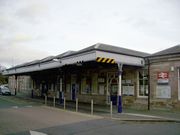
Dunfermline is served by the A907 which meets the M90 and A92 to the east of the town at Halbeath Interchange. This connects the town to Perth to the north, Edinburgh to the south and Kirkcaldy to the east. The main routes through the town are Halbeath Road and Carnegie Drive (A907) from east to west.[61]
The main bus terminus is located on a site to the north of the town centre which provides seating, toilets and a cafe.[62] Two railway stations serve the town – Dunfermline Town to the south of the town centre and Dunfermline Queen Margaret to the east of the town close to Queen Margaret Hospital.[63][64] Nearby stations also exist at Rosyth, Inverkeithing and Dalgety Bay to the south of the town.
The nearest major international airport to Dunfermline is Edinburgh Airport, 13 miles (21 km) miles south of Dunfermline. Smaller municipal airports are also located nearby at Glenrothes 18 miles (29 km), Cumbernauld 25 miles (40 km) and Perth 32 miles (51 km).
A continental ferry service, operated by Norfolkline, runs from a terminal at nearby Rosyth.[65]
Notables
- Stuart Adamson, rock guitarist, with The Skids and frontman of Big Country.
- Ian Anderson, (b. 10 August 1947) singer, flautist, frontman of the long-running British progressive rock band Jethro Tull.
- John Burnside, poet and novelist, born in Dunfermline, 19 March 1955.
- Andrew Carnegie, (1835–1919), was one of the city's greatest benefactors. He gave to the town of his birth, the free library and the public baths. In 1903, he donated the estate of Pittencrieff Park and Glen, together with bonds yielding £25,000 a year, in trust for the maintenance of the park, the support of a theatre for the production of plays "of the highest merit," the periodical exhibitions of works of art and science, the promotion of horticulture among the working classes and the encouragement of technical education in the district. So while New York's Carnegie Hall is much better known, Dunfermline has its own.
- Manny Charlton (b. July 25, 1941) is a musician best known as the guitarist and producer for the Scottish hard rock band Nazareth.
- Kenneth Cranham (b. 12 December 1944), renowned actor of stage and screen.
- Charles I (19 November 1600 – 30 January 1649), King of England, Scotland and Ireland, was born in the royal palace.
- Barbara Dickson (1947-), singer.
- David Ferguson (ca. 1533-1598), parish minister who made the first collection of Scottish proverbs (published in 1641).
- John Forbes (5 September 1707 – March 11, 1759), a general in the French and Indian War who liberated Fort Duquesne and established Pittsburgh, Pennsylvania, United States.
- Robert Gilfillan (1798–1850), poet.
- Jim Greenwood, rugby player with Scotland, Dunfermline RFC, the British and Irish Lions
- Robert Henryson (c.1430-c.1500), one of Scotland's major poets, was connected with the abbey and probably ran the grammar school that served its abbatial Burgh. Much of his poetry contains closely observed detail from daily life, giving a valuable impression of the environment and spoken language of the royal burgh in his lifetime.
- Richard Jobson, musician and TV presenter.
- Billy Liddell (b. January 10, 1922, Townhill, Dunfermline - d. July 3, 2001, Liverpool), Scottish footballer who played his entire professional career with Liverpool F.C..
- Harry Lind, Dunfermline RFC, capped sixteen times for the Scotland national rugby union team
- Sir Joseph Noel Paton (1821–1901), painter and poet.
- John Row (1568–1646), church historian.
- Moira Shearer (1926–2006), ballet dancer and actress.
- Michaela Tabb (1967-), Snooker Referee.
Twin cities
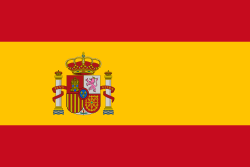 Logroño, Spain
Logroño, Spain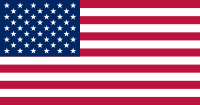 Sarasota, Florida
Sarasota, Florida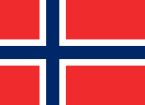 Trondheim, Norway (since 1945)[66]
Trondheim, Norway (since 1945)[66]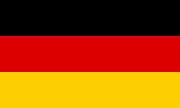 Wilhelmshaven, Germany
Wilhelmshaven, Germany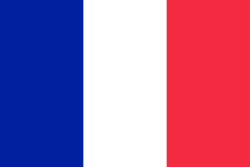 Vichy, France
Vichy, France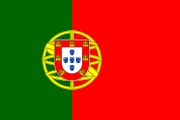 Albufeira, Portugal
Albufeira, Portugal
Notes
- ↑ Tours of Scotland, Nicknames of Scottish Towns and Cities, retrieved on 19 August 2008. Toun is a word in Scots which can refer to any form of settlement from farm estate to burgh or city (see headword toun in Scots National Dictionary) and the reference occurs most famously in the ballad Sir Patrick Spens: The king sits in Dunfermline Toun,/ Drinking the blude-reid wine...
- ↑ 2.0 2.1 2.2 2.3 "Population Estimates for Towns and Villages in Fife". Fife Council. March 2008. http://www.fifedirect.org.uk/uploadfiles/publications/c64_Population06Leaflet.pdf. Retrieved 2008-11-18.
- ↑ McEwan Bert Dunfermline The Post War Years 2004, p9.
- ↑ Fife Council (2006) Dunfermline Economic profile
- ↑ Durie A Century of Dunfermline pp11–13
- ↑ 6.0 6.1 6.2 6.3 Lamont-Brown Fife in History and Legend pp.178–180.
- ↑ 7.0 7.1 7.2 7.3 7.4 7.5 7.6 7.7 Pride Kingdom of Fife pp.8–10.
- ↑ 8.0 8.1 8.2 8.3 8.4 Hendrie Old Dunfermline p.3.
- ↑ Civic Society, Kirkcaldy A History and Celebration p. 12.
- ↑ Omand The Fife Book p.136.
- ↑ 11.0 11.1 Lamont-Brown Fife in History and Legend p.186.
- ↑ Durie A Century of Dunfermline pp.16–17.
- ↑ Omand The Fife Book pp.188–189.
- ↑ Simpson The Auld Grey Toun - Dunfermline in the time of Andrew Carnegie 1835-1919 p.85.
- ↑ McEwan Dunfermline: The Post-War Years p87
- ↑ McEwan Bert Dunfermline: The Post-War Years p.16.
- ↑ "Reserved and devolved matters". Scotland Office. http://www.scotlandoffice.gov.uk/what-we-do/reserved-and-devolved-matters.html. Retrieved 2009-06-14.
- ↑ 18.0 18.1 "Dunfermline and Mid-Fife MSP info". Scottish Parliament. http://www.scottish.parliament.uk/msps/locate/con-dfwe.htm. Retrieved 2008-10-28.
- ↑ "Thomas Docherty MP info". BBC. http://news.bbc.co.uk/democracylive/hi/representatives/profiles/43149.stm. Retrieved 2010-05-13.
- ↑ 20.0 20.1 20.2 20.3 20.4 "Comparative Populartion: Dunfermline Locality Scotland". scrol.co.uk. 2001. http://www.scrol.gov.uk/scrol/browser/profile.jsp?profile=Population&mainLevel=Locality&mainText=Dunfermline&mainTextExplicitMatch=false&compLevel=CountryProfile&compText=&compTextExplicitMatch=null. Retrieved 2009-03-16.
- ↑ "Comparative Population Profile: Fife Council Area Scotland". scrol.gov.uk. 2001. http://www.scrol.gov.uk/scrol/browser/profile.jsp?profile=Population&mainLevel=CouncilArea&mainArea=Fife&mainText=&mainTextExplicitMatch=false&compLevel=CountryProfile&compText=&compTextExplicitMatch=null. Retrieved 2009-03-16.
- ↑ 22.0 22.1 "Comparative Employment Profile: Dunfermline Locality". scrol.gov.uk. 2001. http://www.scrol.gov.uk/scrol/browser/profile.jsp?profile=Employment&mainLevel=Locality&mainText=Dunfermline&mainTextExplicitMatch=false&compLevel=CountryProfile&compText=&compTextExplicitMatch=null. Retrieved 2009-03-16.
- ↑ "Comparative Employment Profile: Fife Locality Scotland". scrol.gov.uk. 2001. http://www.scrol.gov.uk/scrol/browser/profile.jsp?profile=Employment&mainLevel=CouncilArea&mainArea=Fife&mainText=&mainTextExplicitMatch=false&compLevel=CountryProfile&compText=&compTextExplicitMatch=null. Retrieved 2009-03-16.
- ↑ 24.0 24.1 McEwan, Bert Dunfermline The Post-War Years p. 73.
- ↑ 25.0 25.1 25.2 "Dunfermline Economic Profile". Fife Council. 2007-04-14. http://www.fifedirect.org.uk/uploadfiles/publications/c64_DunfermlineRevisedApr07.pdf. Retrieved 2009-08-23.
- ↑ "Dunfermline Town Centre Fact Sheet". Fife Council. http://www.fife.gov.uk/uploadfiles/publications/c64_DunfermlineTownCentreFS.pdf. Retrieved 2009-07-21.
- ↑ "Dunfermline to get £100m revamp". BBC News (Edinburgh, East and Fife). 2006-04-24. http://news.bbc.co.uk/1/hi/scotland/edinburgh_and_east/4940478.stm. Retrieved 2009-07-21.
- ↑ 28.0 28.1 Walker and Ritchie Fife, Perthshire and Angus p.129.
- ↑ 29.0 29.1 29.2 Fife Regional Council Medieval Abbeys and Churches in Fife Fife Regional Council p.16.
- ↑ Lamont-Brown Fife in History and Legend p.182.
- ↑ 31.0 31.1 Carnegie Dunfermline Trust Dunfermline: Our Heritage pp.13–16.
- ↑ 32.0 32.1 McEwan Bert Dunfermline Post War Years p.13.
- ↑ 33.0 33.1 33.2 Pride Kingdom of Fife pp.12–13.
- ↑ Gifford Buildings of Fife p.188.
- ↑ 35.0 35.1 35.2 35.3 35.4 35.5 Carnegie Dunfermline Trust Our Heritage p.21.
- ↑ 36.0 36.1 36.2 MacKay Little Boss: The Life of Andrew Carnegie p.23.
- ↑ Gifford Buildings of Fife p.191.
- ↑ 38.0 38.1 Dunfermline Carnegie Trust Our Heritage p.31.
- ↑ 39.0 39.1 Gifford Fife: Buildings in Scotland pp.185–187.
- ↑ 40.0 40.1 Gifford Buildings of Fife p.195.
- ↑ 41.0 41.1 Pride Kingdom of Fife p.16.
- ↑ Dunfermline Carnegie Trust Our Heritage p.118.
- ↑ Gifford Buildings of Fife p.343.
- ↑ 44.0 44.1 44.2 44.3 Dunfermline Carnegie Trust Our Heritage pp.168–171"
- ↑ Lamont-Brown Fife in History and Legend p.199.
- ↑ Gifford Buildings of Fife p.239.
- ↑ Dunfermline Carnegie Trust Our Heritage p.17.
- ↑ Lamont-Brown Fife in History and Legend
- ↑ Gifford Buildings of Fife p.315.
- ↑ 50.0 50.1 Hendrie, William F. Old Dunfermline p. 30.
- ↑ "Carnegie Hall profile, artfife". http://www.attfife.org.uk/attFife/index.cfm?fuseaction=org.FATFAC&contentID=79B6E643-F530-11D5-8DD500508BBD18A1. Retrieved on 27 July 2008
- ↑ "Alhamba Theatre profile, britishtheatreguide". http://www.britishtheatreguide.info/news/dunfermlinealhamba.htm. Retrieved on 27 July 2008
- ↑ "nightlife, Dunfermline guide". http://dunfermlineguide.co.uk/entertainmentdunfermline.aspx. Retrieved on 27 July 2008
- ↑ "Dunfermline Music Profile, kinemagigz". http://www.kinemagigz.com/. Retrieved on 27 July 2008
- ↑ 55.0 55.1 55.2 55.3 McEwan, Bert Dunfermline The Post-War Years p. 97.
- ↑ "A list of all primary schools in Fife". Fife Council. http://www.fifedirect.org.uk/topics/index.cfm?startRow=51&OBJECTID=xxx&ORDERBY=location&FUSEACTION=Facility%2EList&SUBJECTID=0AB411F8%2D508B%2DDE79%2D478BA07C673E89C9. Retrieved 2009-12-20.
- ↑ "A list of all secondary schools in Fife". Fife Council. http://www.fifedirect.org.uk/topics/index.cfm?fuseaction=Facility.List&subjectid=EC1C63EC-508B-DE79-470C9585EF1932A4&objectid=xxx&orderby=location. Retrieved 2009-12-20.
- ↑ 58.0 58.1 58.2 McEwan Dunfermline: The Post-War Years pp40–41"
- ↑ "Dunfermline High School Inspection". HMIE. http://www.hmie.gov.uk/documents/inspection/5446139DunfermlineHSreport.html. Retrieved 2010-05-01.
- ↑ "About Carnegie College". HMIE. http://www.carnegiecollege.ac.uk/About-Us/About-Carnegie-College-%7C-Further-Education-Courses-%7C-Dunfermline-%7C-Scotland.html. Retrieved 2010-05-01.
- ↑ Nicholson Maps Fife – Second Edition pp4–7
- ↑ "Dunfermline Bus Station info". Fife Council. http://www.fife.gov.uk/atoz/index.cfm?fuseaction=facility.display&FacId=408ACE50-5B59-44CA-8520DD028D253823. Retrieved 2008-10-28.
- ↑ "Dunfermline Queen Margaret Railway Station info". Fife Council. http://www.fifedirect.org.uk/atoz/index.cfm?fuseaction=facility.display&facid=6F7FECBC-52C5-4D02-99C87B9B02E6328F. Retrieved 2008-10-28.
- ↑ "Dunfermline Town Railway Station info". Fife Council. http://www.fifedirect.org.uk/atoz/index.cfm?fuseaction=facility.display&facid=369E74AF-178E-499F-A9B76AF57837998C. Retrieved 2008-10-28.
- ↑ "Rosyth Ferry Terminal". Fife Council. http://www.fifedirect.org.uk/atoz/index.cfm?fuseaction=facility.display&facid=51DF493B-B2D5-569A-EE7E490B67E6A9C6. Retrieved 2010-01-13.
- ↑ Trondheims offisielle nettsted - Vennskapsbyer
References
Bibliography
- Durie, Bruce (2002). A Century of Dunfermline. WHSmith. ISBN 075093137X.
- Hendrie, William F. (2002). Old Dunfermline. Stenlake Publishing. ISBN 1840331941.
- Lamont-Brown, Raymond (2002). Fife in History and Legend.
- Pride, Glen L. (1999). The Kingdom of Fife (2nd edition ed.). ISBN 1873190492.
- McEwan, Bert (2004). Dunfermline The Post-War Years.
- Omand, Donald (2000). The Fife Book. Edinburgh: Birlinn. ISBN 1841582743.
- Dunfermline Carnegie Trust (1998). Our Heritage.
External links
- Dunfermline Photo Gallery - Dunfermline Photo Gallery
- Dunfermline Music Scene Website, dedicated to Dunfermline Music
- Dunfermline Website
- The Annals of Dunfermline 1096-1745
- Dunfermline Guide website- a guide to Dunfermline
- Dunfermline online website - Dunfermline on the web since 1996
- Early Carnegie Libraries - featuring the world's first Carnegie Library in Dunfermline
- Dunfermline Economic Profile
|
|||||